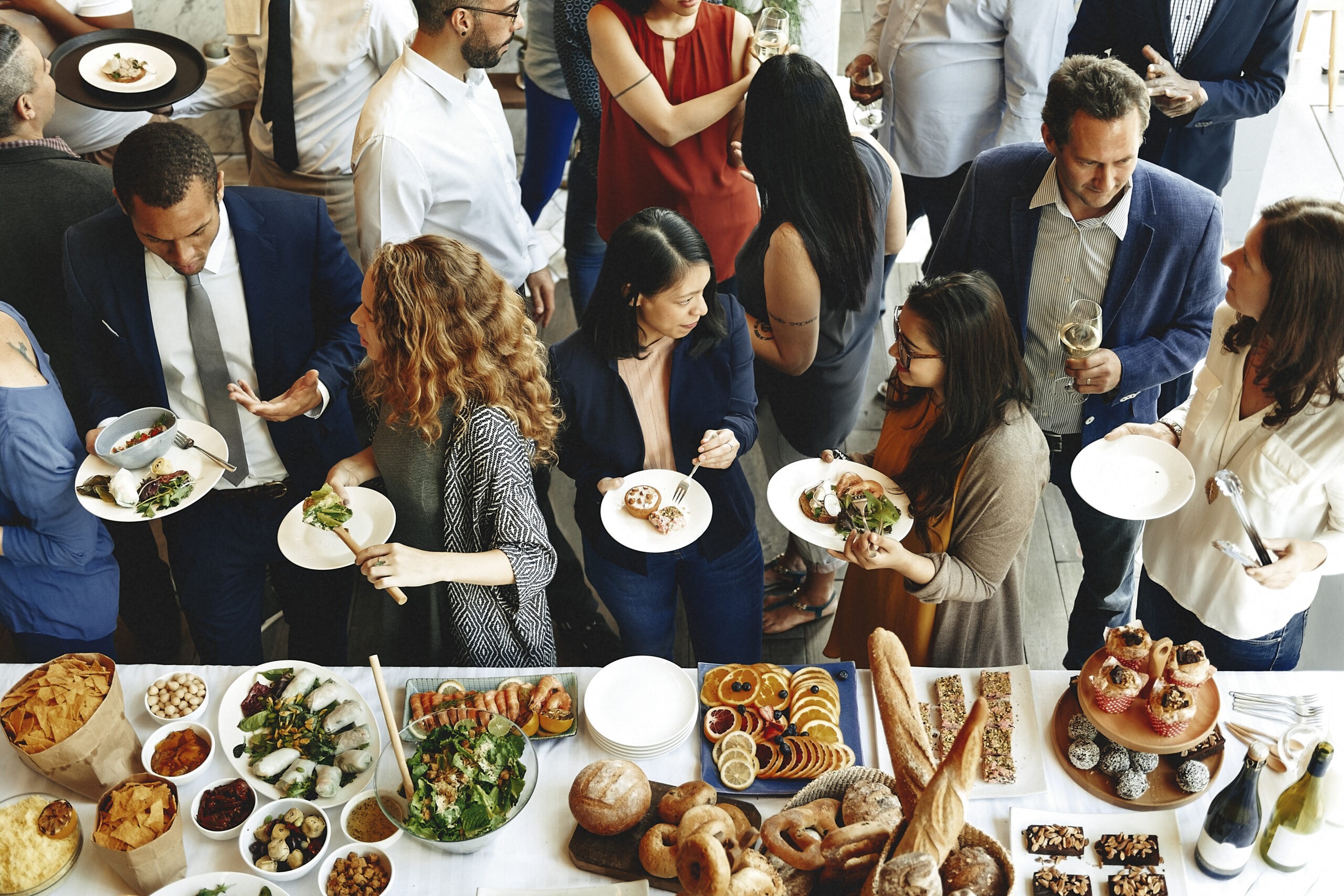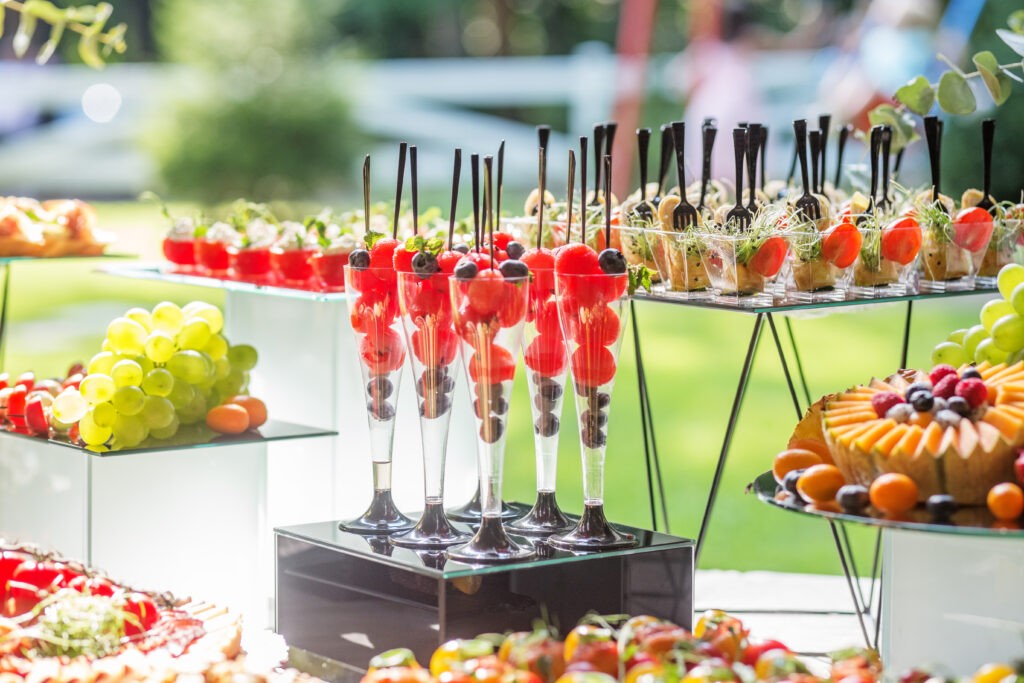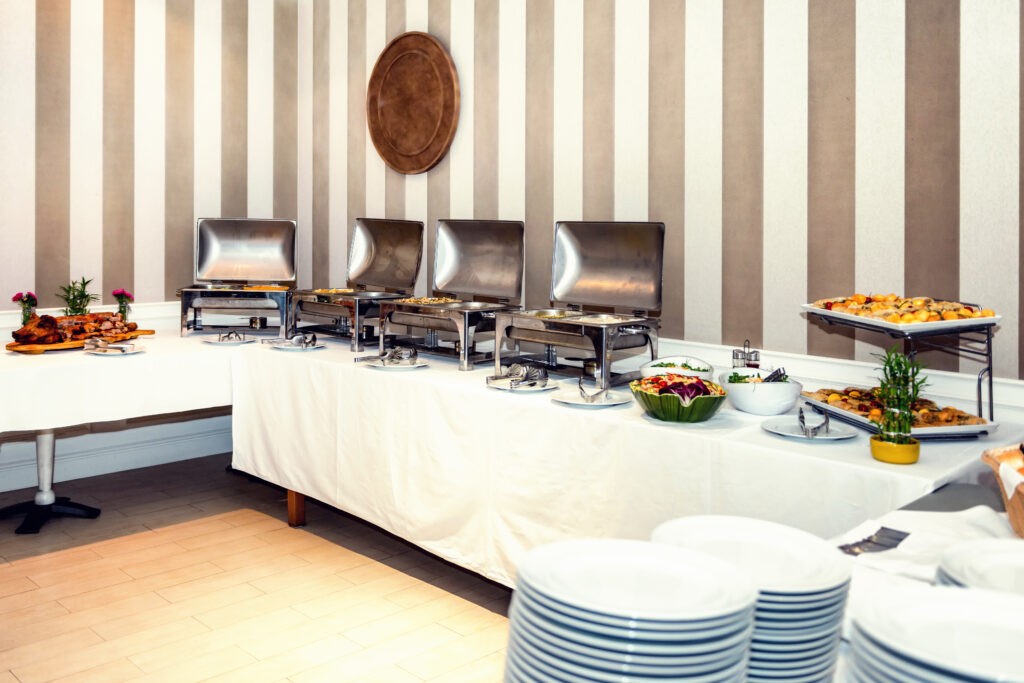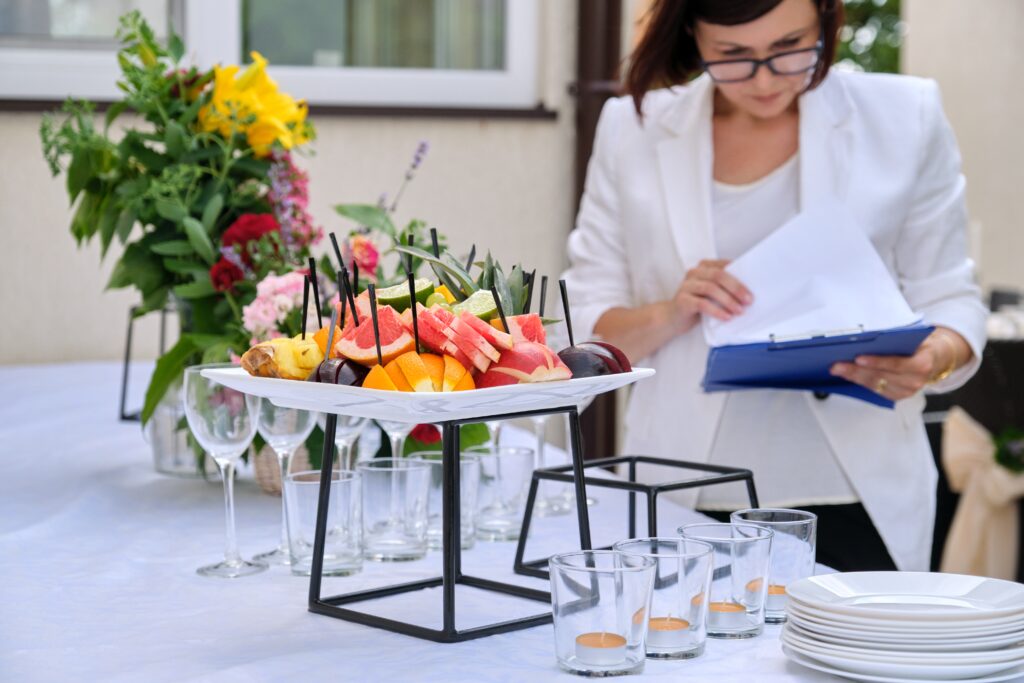
27 Sep 5 Things to Consider When Planning Food for an Event
Putting on a great event involves good planning and the flexibility to adapt when things change. Once you have decided on the fundamentals (date, venue, budget, number of guests), you are ready to arrange the event catering. There is much to consider, including the type of food, what drinks you want to serve, timings, and venue restrictions.
Selecting the right meals to accommodate your guests can be just as overwhelming as the rest of your party’s details. Whether it is a wedding, fundraiser, grand opening, or office party, the food options should matter when strategizing the occasion. To help you with this we came up with five things you should consider when selecting food options for your next event.

Your guest list informs your menu. If your guests’ tastes are traditional then fresh takes on the classics work well.
Know your guests and their preferences
know your audience. Who is attending your event? Consider the demographic of your guests and how those demographics may influence their preferences. These can include age, gender, financial or ethnic backgrounds, geographic makeup, etc…
You also need to think about what sort of food they might prefer or even require– attendees of a particular health-focused event may want organizers to provide only healthy options, while older guests might prefer a milder menu.
Knowing the Venue
Knowing the venue is vital. It is possible that health and safety rules at your chosen location will affect how you plan the event catering and what food you can serve. At venues that don’t allow frying or grilling on-site, or if the event is outside and there are no ovens to warm food, you need to get creative with the menu. This might mean creating hearty stews or a rich tagine that can be reheated easily. If the venue’s facilities are really limited don’t worry — we can bring our own pop-up kitchen.
Seating should be arranged so guests are comfortable, and they (and the event catering staff) can move easily around the venue. You don’t want guests and staff tripping over each other. Event catering is like a performance: everything needs to be choreographed perfectly.

Your caterer must know the proposed set-up in order to plan prefect execution of the menu and service and clean up.
Give attendees a choice
Not everyone’s palette is the same. Some people have a dedicated sweet tooth, while others want you to pile on the spices. Unless your event is celebrating a hyper-specific cuisine, offering your guests more than one option will help ensure everyone has something delicious to choose from. You will also want to know if any of your guests have special dietary requirements that need to be addressed.
When you start menu planning, a good rule of thumb is to offer at least 2 to 3 entrée options so that guests can select their favourite. Offering vegetarian, vegan, and gluten-free options can help ensure that every guest has something on their plate. Make sure that you include a variety of condiments and salad dressings as well.
Incorporate seasonal, fresh foods
Think about what time of year your event is taking place and consider providing items that are only available during this time period. For example, who does not love fresh strawberries, but they have such a short season! Fresh peaches are a great treat during summer in the Northeast, while yams are better suited for a winter menu. I would advise against featuring out-of-season food.
Seasonal symbolism matters. A BBQ compliments a summer’s day event, while hearty “comfort food” better suits a sit-down holiday celebration.

you need to know how long each type of meal takes on average, and have your menu preparation, services and consumption requirements match the time allotted.
Coordinate meals with event timing
Certain dishes require different time lengths to eat. Ask yourself how long your event is going to be and choose a dish that will coordinate with the time frame of your event. For example, let’s say your event has the guests on their feet for the whole time, and they are mingling with each other and moving throughout the event space. A sit-down dinner would interrupt the flow of the meal and not work with the event’s overall vibe. In cases like these, it may be best to serve a boxed meal.
For longer and slower-paced events, your guests will find the time to sit around and chat in a fixed location. For events like wedding receptions, awards ceremonies, and banquets, a long-form sit-down menu can prove beneficial. If the event were a couple of hours long, a plated meal or buffet would be better suited.
Have you also read these articles?
Fundraising Event Trends for 2023: What’s Hot in the World of Charity Galas


